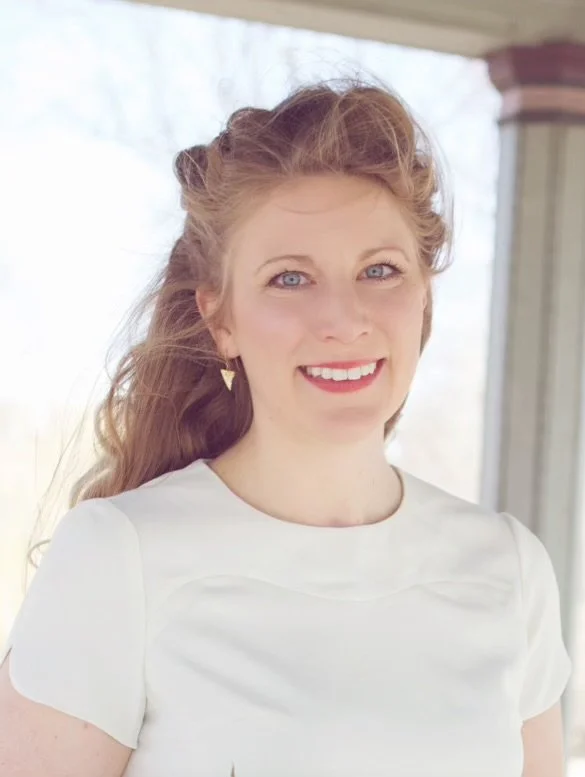Kristen Davis
THE PILATES LAB CO-FOUNDER AND PILATES INSTRUCTOR
In 2005, while (somewhat miserably) pursuing a PhD in Chicago, Kristen Davis booked a lesson at the Pilates studio across the street from her apartment. It was love at first Hundred. By 2007, she'd started her comprehensive teacher training with Balanced Body Pilates. In 2009, she’d said good-bye to academia to teach Pilates full time.
Kristen has studied extensively in the lineages of three of Mr Pilates’s students: Eve Gentry through Core Dynamics Pilates and with second-generation instructor Debora Kolwey, Romana Kryzanowzka through Real Pilates Teacher Training and with second-generation instructor Alycea Ungaro, and Kathy Grant through Cara Reeser's Kathy Grant Heritage Training and with second-generation instructor Blossom Leilani Crawford.
Kristen's education is unique in that it has given her the skills and depth of knowledge to apply the work of three Pilates elders to clients of all ages and experience levels. Because Pilates is an unregulated industry, she believes it is critical to understand where and from whom exercise modifications and variations come, as well as when and why to teach them.
Her work is playful, precise and patient, and she enjoys working with clients who are returning to fitness after surgery or injury. She believes Pilates is a lifelong pursuit suitable for all bodies, and in any given week she works with clients with scoliosis, osteoporosis, joint replacements, spinal stenosis, chronic pain, and autoimmune conditions. She is particularly passionate about helping older populations maintain strength and fitness with dignity.
Visit her at stlpilateslab.com
Workshop 1: Real Talk on Aging Populations: Predictors and Pilates Programming for Aging in Place
Retired clients can be a boon to Pilates studios: often, they have free time to work out when 9-5 clients do not. Many of these clients have seen the benefits of Pilates or other types of fitness in earlier phases of their lives. These clients understand the value of an ongoing fitness program that helps them maintain strength, mobility and balance.
According to the AARP, 90% of adults over age 65 wish to stay in their homes as they age, or age in place. Independent older clients who can successfully age in place not only help a studio’s bottom line, but also support longer term client-instructor working relationships. Working with clients who become increasingly frail or who need more support can prove challenging for instructors who are skilled in progressing clients but often less confident in helping clients maintain fitness levels against the challenges of aging.
Some of the challenges aging clients face include reduced muscle mass (sarcopenia), reduced bone density (osteopenia or osteoporosis), joint replacement, general concerns with balance and mobility, as well as potential declines in cognition and memory. All of these concerns can drastically affect an older client’s ability to successfully age in place. While this list can seem overwhelming to both client and instructor, this presentation seeks to help instructors competently and safely work with aging populations while instilling confidence and independence in their clients.
Current research suggests at least three biometrics for successful aging in place: gait speed, grip strength, and ability to perform a wall squat for 30 seconds. Through an interactive workout and lecture format, presenter Kristen Davis will demonstrate where and how instructors can focus on exercises and teaching skills that encourage better gait, grip and squatting abilities within the classical Pilates repertoire. Using her years of expertise in working with older clientele, she will also offer tips for simple homework assignments and general best practices for working with aging populations.
Workshop 2: Enhancing Your Teaching through Eve Gentry and Kathy Grant Lineage
Pilates elders Eve Gentry and Kathy Grant were both rehabbed by Joseph Pilates, but never worked together in his studio. In fact, they met only once-- much later in their lives at a medical conference. Nevertheless, both taught their own auxiliary work alongside the classical Pilates repertoire: Eve developed her Gentry Movement Fundamentals while working with injured clients in Santa Fe, while Kathy developed her Before the Hundred protocol while teaching Pilates at NYU’s Tisch School of the Arts.
These Pilates elders worked on opposite coasts, but their work reflects a shared interest in breath work, lateral movement, and rotation. On the one hand, there are only so many ways a body can move, and it seems inevitable that Mr Pilates’s students might eventually add in supplementary work in ranges of motion that appear less in the Pilates repertoire. On the other, the similarities between their respective protocols cannot be denied.
Mr Pilates famously wanted everyone in the world to practice his method. Yet because our industry remains unregulated, it can be challenging to break through the noise of online platforms, Pilates influencers, hybrid methods, automated apparatus, and more.
It is perhaps the influence of all of this non-Pilates that leads two of the biggest objections we hear from our prospective clients: “Pilates isn’t safe. I’ll get hurt.” and “Pilates is too easy. It won’t do anything for me.” The simplest answer to both complaints is, of course, “Then you’re doing it wrong.” But what if we reclaimed the auxiliary work of the elders as an antidote to both concerns? What if we could explore the building blocks of the Pilates method and build skills that deepen and intensify the work safely and effectively.
This presentation will examine some not only the similarities between the Gentry Movement Fundamentals and Before the Hundred, but also explore how both protocols can help Pilates instructors scale their mat classes safely, playfully, and with reverence for authenticity and lineage.


